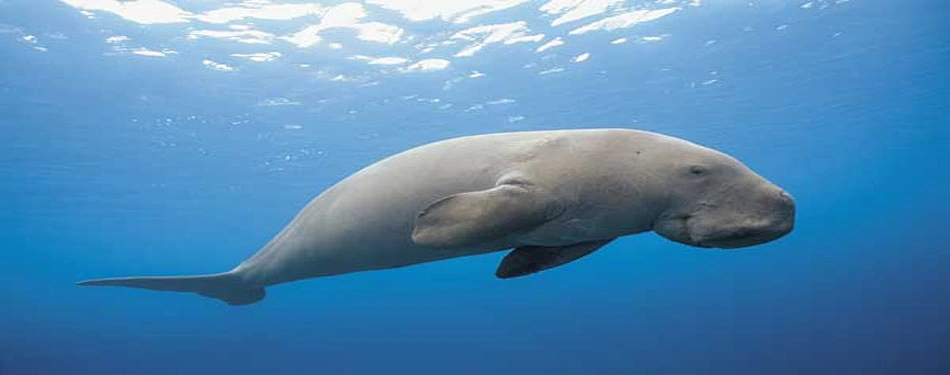Guardians of the Sea: The Dugongs of Andaman and Nicobar Islands

The Andaman and Nicobar Islands, a haven for marine biodiversity, are home to the
fascinating dugongs of Andaman. These gentle sea mammals, often known as "sea cows in
Andaman," play a crucial role as sea guardians in Andaman, maintaining the underwater
ecosystem and captivating the hearts of conservationists and nature enthusiasts.
Understanding the Dugong: A Fascinating Marine Mammal
● Meet the Dugong: An Overview
The dugong, scientifically known as Dugong dugong and revered as the state animal of
Andaman, resembles a combination of a walrus and a manatee. These herbivorous creatures,
integral as sea guardians in Andaman, have a streamlined body, paddle-like flippers, and
a distinctive fluked tail, suited for life in coastal waters and seagrass habitats.
● Habitat and Distribution: Dugongs in Andaman and Nicobar
The Andaman and Nicobar Islands, the stronghold of the dugongs of Andaman, provide an
ideal habitat with extensive seagrass meadows and protected bays. These islands are a
sanctuary for the dugongs of Andaman, also found across the Indian Ocean and western
Pacific Ocean.
The Role of Dugongs in Marine Conservation
● Ecosystem Engineers: Dugongs and Seagrass Meadows
Dugongs, the sea guardians in Andaman, are "ecosystem engineers," vital in maintaining
seagrass meadows' health. Their grazing stimulates growth, ensuring the balance of this
critical habitat, and supporting various marine life forms.
● Conservation Challenges: Threats to Dugong Populations
Despite being the state animal of Andaman, dugongs face conservation challenges. Threats
include habitat degradation, fishing gear entanglement, and accidental boat strikes,
leading to their declining numbers.
Conservation Efforts: Protecting the Dugong Population
● Conservation Initiatives: Efforts for Dugong Protection
Various organizations and conservationists rally to safeguard the dugongs of Andaman.
Efforts include habitat protection, creating marine reserves, and raising awareness,
focusing on the sea cow in Andaman.
● Community Involvement: Local Engagement in Conservation
Local community involvement is key in protecting the Andaman state animal. Collaborative
efforts promote sustainable practices benefiting both dugongs and local livelihoods.
In conclusion, the dugongs of the Andaman and Nicobar Islands serve as vital guardians of
the sea. Their conservation requires collective efforts to ensure their presence as a
testament to marine conservation. Protecting these magnificent creatures, the state
animal of Andaman, is our responsibility, preserving their habitats for future
generations.
As stewards of the oceans, safeguarding the dugongs, the sea cow in Andaman, is
imperative, ensuring the ecological balance and health of marine ecosystems.
